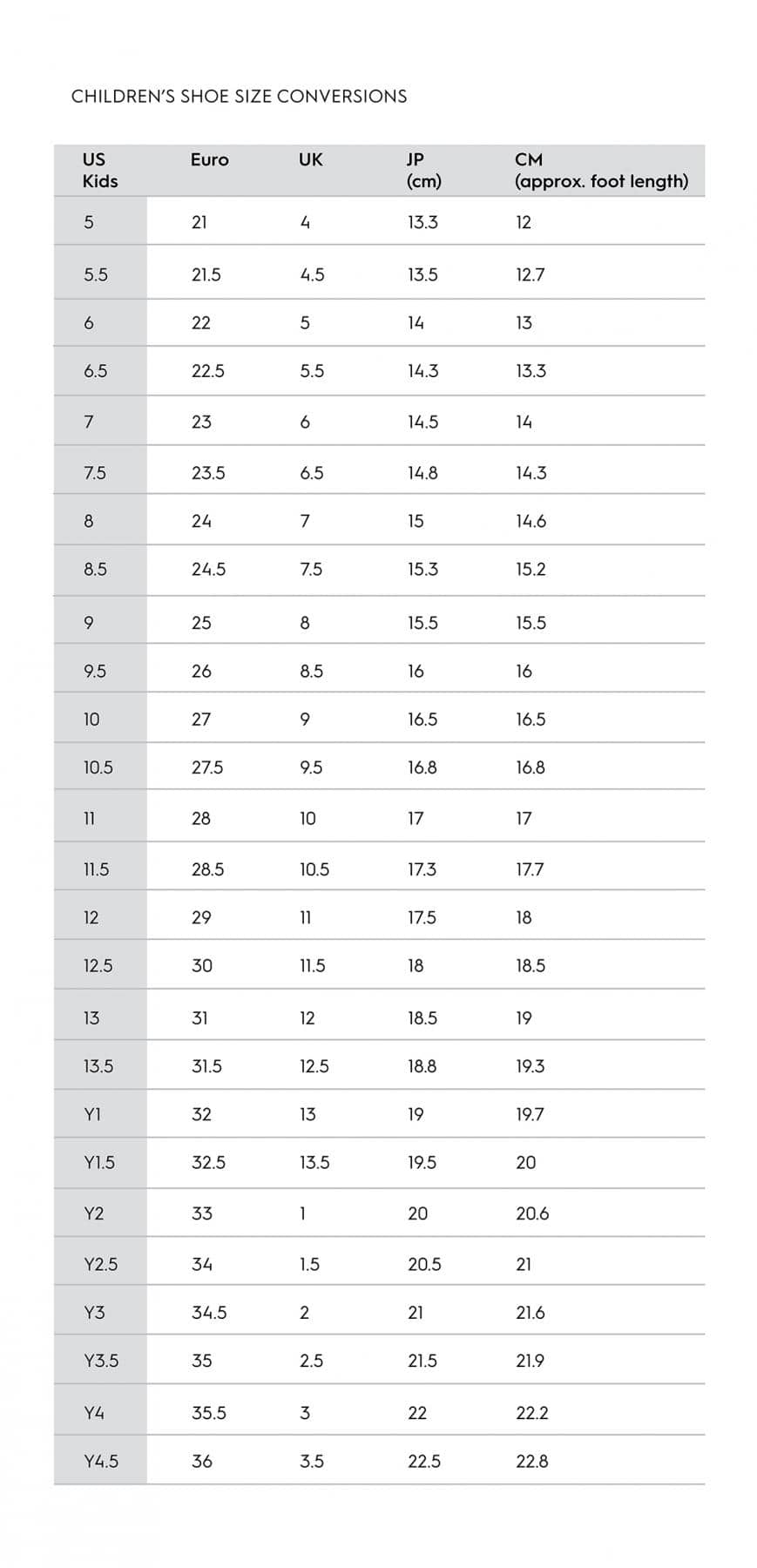Stride with Confidence: Your Ultimate Guide to AU Shoe Size Conversion for Kids
Greetings, super parents! Are you on the quest to conquer the world of tiny toes and growing feet? Finding the perfect shoe that fits your child beautifully can feel like a fairy-tale triumph. But with the ever-changing tides of growth spurts and the bewildering array of international sizing charts, it’s easy to feel lost in the land of laces and soles. Fear not, for we are here to help you navigate the waters of AU shoe size conversion, so your little one can trot, skip, and run with joy—and so can you!
Understanding AU Shoe Sizes: The Basics
Before we plunge into the nitty-gritty, let’s get down to the basics. Australian shoe sizes are often measured quite similarly to UK sizes, and they might just be one of the simplest to get your head around once you know how. But remember, while the numbers might look familiar, the sizes can differ depending on whether your kiddo is still a tiny tot or has graduated to the world of youthful adults. So, keep a keen eye on the details!
Size Matters: Measuring Little Feet
The first step in our shoe-fitting quest is to accurately measure your child’s feet. Did you know that it’s not just the length that counts? The width and the arches of those precious feet play a huge role too! It’s best to measure your child’s feet at the end of the day when they’re likely to be at their largest. And hey, if you can measure them standing up, that’s the gold standard—gravity does its thing, and we get a true size reading.
Size Charts: The Treasure Maps of Shoe Shopping
Next up: deciphering size charts. These handy grids will be your treasure maps as you sail through the sea of sizes. We’ve put together an easy-to-follow chart later in this guide which will match Australian sizes with their equivalent in US, UK, and European measurements. A small caveat: always check the retailer’s size chart if available, as there can be slight variations within brands.
On the Right Foot: Practical Tips for Perfect Fitting
Let’s sprinkle some practical magic on our journey with tips to ensure those charming shoes you pick are a perfect fit:
- The Thumb Rule: When trying on shoes, use your thumb to check for about a half inch (or a thumb’s width) of space between your child’s longest toe and the tip of the shoe.
- The Wiggle Room: Encourage your kiddo to wiggle their toes. If the shoe fits, they should be able to do the toe-wiggle dance with ease.
- The Heel Test: The heel should fit snugly, without slipping. A heel that slips is a trip trap—no pun intended!
- Walk this Way: Have your child take a stroll around the store—or if you’re online shopping, around a non-carpeted room. Observe their gait; comfort and natural movement are key indicators of good fit.
Remember, measuring and fitting should be an ongoing story. Kids’ feet grow faster than a beanstalk, and so regular checks are a must to keep those growing adventurers comfortably shod.
Online Shopping: The Virtual Shoe Store Adventure
In the digital age, shoe shopping often takes place in the sprawling digital marketplace. Here’s where our conversion guide becomes as valuable as a trusty sword in a knight’s hand. Be prepared with accurate measurements before you click ‘Add to Cart,’ and always read the return policy—just in case that glass slipper doesn’t quite fit after all.
This guide is ready to be your handbook, your manual, your secret map to finding shoes that fit just right, no matter where your child may frolic or play. So sit back, click on through, and let’s make sure that every step they take is a comfortable one!
Disclaimer: The information provided here is geared towards educating parents about the AU shoe sizing system and should be used as a guide only. It’s always best to try shoes on in person where possible, especially with children’s rapidly changing feet.
Rejoice as the chaos of mismatched sizes melts away into blissful clarity! Stay tuned, as there’s more to this story of neat feet, and we’ll walk you through it, step by perfect-fitting step.

Five Essential Insights for Mastering AU Shoe Size Conversion
Embarking on your shoe shopping odyssey requires more than just a good eye for style. To be truly prepared, here are five golden nuggets of wisdom every parent should know:
- Know the Lingo: Start by familiarizing yourself with shoe sizing terms. AU sizes are based on the British standard, so don’t be fooled into thinking they align with the US or EU systems. Understanding this will save you from accidental mismatches.
- Measure Regularly: Children’s feet are like little shape-shifters, growing at lightning speed! Measuring their feet every 2-3 months is a smart habit. This way, you won’t be caught off guard by a sudden spurt that demands new shoes.
- Consider the Socks: Always factor in sock thickness when measuring and fitting shoes. Your child will likely wear socks with their shoes, so ensure the fit is right with socks on to avoid a too-tight scenario.
- Leave Room for Growth: You might be tempted to buy a size up to accommodate growth, but too much room can lead to tripping and discomfort. Aim for just the right amount of space – not too loose, not too tight.
- Quality over Quantity: With shoes, quality trumps quantity every time. High-quality shoes will adapt better to your child’s foot and provide support and durability, making them a wiser investment in the long run.
With these five insights in your parenting toolkit, you’re well on your way to mastering AU shoe size conversion!
The Magic Formula: AU Shoe Size Chart
Now, let’s reveal the secret scrolls – our trusty AU Shoe Size Chart. This is the Rosetta Stone that will translate the mystery of sizes across different lands and shoe realms.
| AU Size | US Size | UK Size | EU Size | Foot Length (cm) |
|---|
Keep in mind that exact conversions may vary slightly among different brands, so consider this chart a starting point on your journey.
Beyond the Numbers: Other Considerations When Choosing Shoes
Size is just the tip of the iceberg. Delve deeper, and you’ll find other elements playing a part in the perfect shoe choice:
- Material Matters: Feet need to breathe. Opt for natural materials like leather or canvas to ensure your child’s shoes offer comfort and ventilation.
- Flexibility: Rigidity is the arch-enemy of the natural foot movement. Search for shoes that bend with the foot, promoting healthy walking habits.
- Arch Support: Especially for active feet, proper arch support can make all the difference in preventing discomfort and fostering healthy foot development.
- Fastenings: Laces, velcro, buckles – there’s a world of choices out there. The best fastenings are ones that keep the shoe securely on the foot, without causing undue pressure or inconvenience.
- Tread Lightly: Look at the sole’s pattern and material. A good tread means better grip, making each step safer, whether on the playground or pavements.
Choosing the right shoe is an art form, blending the science of sizing with the intuition of a parent’s touch. You’ve got this!
As your child ventures through playgrounds and hallways, remember that the journey towards the perfect fit is ongoing and ever-changing. But with this guide, the path is clear and the quest is joyous. From crawling to the first wobbly steps, to running with boundless energy, we’re here to ensure those tiny feet have the support they need, every step of the way. Join us as we continue to explore the enchanting world of children’s shoes – where every correct size found is a victory worth celebrating!
For more great articles please see here. For more information see here
Disclaimer
The articles available via our website provide general information only and we strongly urge readers to exercise caution and conduct their own thorough research and fact-checking. The information presented should not be taken as absolute truth, and, to the maximum extent permitted by law, we will not be held liable for any inaccuracies or errors in the content. It is essential for individuals to independently verify and validate the information before making any decisions or taking any actions based on the articles.




